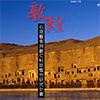
Dunhuang Studies
The Dunhuang caves, which flourished along the Silk Road from the 5th to 13th centuries of the Common Era, have long been renowned for their magnificent works of art, earning recognition as a World Heritage site, while the advent of digitalization technology has breathed new life into the study of Dunhuang art.
Under the leadership of the British Library, the International Dunhuang Project (IDP) has evolved into a major worldwide research effort. Supported by the Foundation since 1993, the IDP has completed the creation of digital databases containing tens of thousands of texts and illustrations from the first thousand years of the Common Era. These works shed new light on the history of the Silk Road, as well as Dunhuang’s key role in this leading international trade route. The IDP also provides information on tens of thousands of paintings, artifacts, textiles, manuscripts, historical photographs and maps as well as cataloguing and contextual information. All data and images are freely accessible to all.
From 2011 to 2013, Professor Shou-chien Shih of the Institute of History & Philology, Academia Sinica, engaged in a joint scholarly effort with the Research Center for Digital Humanities at National Taiwan University and the Dunhuang Academy China to undertake a digital study of the world-renowned works of art at the Dunhuang caves, especially caves 61 and 254. The work was completed in early 2014, and featured a virtual tour of these two caves that allows people throughout the world to fully appreciate their wonders. Professor Shih and his colleagues subsequently presented their results at the Annual Meeting of the Consortium of Humanities Centers and Institutes (CHCI), which was held in Hong Kong on June 5-8 of that year.


